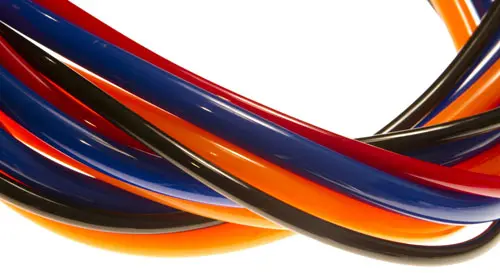Static Dissipative Tubing
Static electricity is a stationary charge of electricity resting on an object’s surface. With plastic tubing, the charge is usually generated by friction on the exterior or interior of the tubing. The charge is typically localized. This means that a charge may exist on one part of the tube but not the entire tube. The spotty nature of the charge makes it much harder to detect. Furthermore, humans can only sense electrostatic discharge (ESD) greater than 3,500 electrostatic volts. A charge as low as 100 ESD volts can damage certain circuits meaning that electronics can be destroyed by ESD without the person even knowing it.
Static Dissipative Polyurethane tubing is made from an ether-based polyurethane that is specially formulated to help control ESD. It should always be used in low humidity environments or when tubing is going to be near circuit boards.
Static Dissipative Polyurethane tubing is made from an ether-based polyurethane that is specially formulated to help control ESD. It should always be used in low humidity environments or when tubing is going to be near circuit boards.
Features Static Dissipative Tubing
- Dissipates electrostatic charges with no chemical additives.
- Contains no conductive fillers and no particle emission.
- Dissipative values are permanent and cannot be washed away.
- Non-contaminating and non-outgassing.
- Non-corrosive to electronic leads and components.
Barb fittings are the suggested fittings to use with the static dissipative polyurethane tubing.






